Simone Weil & the Cathars: A Q & A Interview with Malcolm Barber
Ronald Collins & Malcolm BarberJean Ballard, the editor of Cahiers du sud, wanted a special issue of his journal dedictaed to “Le Génie d’Oc et l’Homme Mediterranéen.” It was a project he had been working on for years. To that end, he solicited Joë Bousquet (“the great invalid-poet-genius loci”), Déodat Roché (“the greatest representative of Catharism”), and Renat Nelli (“a Provençal scholar of the troubadours”) (Fiori 219). “Shortly after having met Simone,” Ballard informed her of his plans. He said “this project ‘set her afire.’” He then “loaned her a booklet on Catharism by Déodat Roché,” which interested her greatly. She eagerly read Roché’s monograph on Catharism and his essay titled “L’Amour spirituel chez les Cathares” (subsequently published, Cahiers du sud, Feb. 28, 1943). Soon enough, she “felt impelled to write Roché” (Pétrement 394-395) Thus inspired, she wrote two essays related to Catharism (SE 35-54).
Focus on force

“In her studies of the Cathars (a word that comes from the Greek term for ‘pure’), Weil admired most of all their rejection of violence, their focus on love as a primary value, and their attempt to live peacefully in full awareness of the powerful domain of force. Unfortunately, . . . the Albigensian Crusade, instigated by the papacy, brutally exterminated this religious group because of their opposition to the authority of the Church.” That at least, was Weil’s “innovative perspective.” (Doering, 141).
Focus on the Old Testament & the Roman Empire
Weil was also drawn to the Cathars given what she understood to be their view of the Old Testament. “She believed with Roché that the worship of power . . . caused the Hebrews to lose the idea of good and evil.” Worse still, she declared, the “‘influence of the Old Testament and of the Roman Empire, whose condition was continued by the Papacy, is to my mind the two essential sources of the corruption of Christianity.'” As she saw it, Catharism was “the last living expression in Europe of pre-Roman antiquity,” a tradition richly influenced by Pythagoras and Plato (Pétrement 395 & SL 130).
Caveat lector
Though Weil was clearly attracted to Catharism as she understood it in the ways presented in Roché’s writings, one must nonetheless proceed with caution given that she knew “little about them” (SL 129). Moreover, taking Catharism “as the key to her thought can only mislead.” That is, any “resemblance of Weil’s thought to Cathar dualism [see below] is both incidental and superficial . . . . A more anti-dualist thinking can hardly be imagined” (McCullough 214, 215) (see also Finch 28).
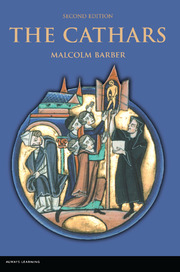
In order to provide some general background about the Cathars, their history and beliefs, and the persecution they endured, I interviewed Professor Malcolm Barber, a renowned authority on the Cathars and their civilization. He is an Emeritus Professor at the University of Reading, where he taught medieval history. Professor Barber is also the author or co-author of several books, including The Cathars: Dualist Heretics in Languedoc in the High Middle Ages (2nd ed., Routledge, 2013), which includes a chapter on Weil, Déodat Roché, and Otto Rahn (ibid. 239-246). Below are the written questions I sent him and his replies. — rklc
“[T]his loathsome heresy of those who some call the Cathars, . . . has grown so strong that they no longer practice their wickedness in secret, . . . but proclaim their error publicly and draw the simple and weak to join them . . . .” — Third Lateran Council (1179)
(Barber 132)
— The Interview —
Collins: By the time you wrote your book on the Cathars, you had already published no fewer than four books on medieval history, especially certain aspects of Catholic history. How and why did you come to write about the Cathars?
Barber: My interest in the Cathars developed after I had begun to study the trial of the Templars in the early fourteenth century, not because there was any direct connection but because both the Templars and the Languedocian heretics were questioned by papal inquisitors. As these were legal proceedings they were carefully recorded by notaries, who included names, places, and dates, as well many details of contemporary life not readily available elsewhere. I could not have written The Trial of the Templars (1978, 2012) without these depositions, which were rich source materials. They are not without problems for the historian, but these can be overcome once attention is paid to the circumstances in which they were produced. For example, account needs to be taken of the distortions of memory, the possibility of torture or other forms of pressure, and the extent to which a deponent might have been ‘led’ or manipulated by the structured nature of the inquisitors’ questions.
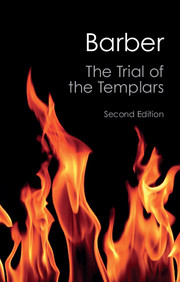
Question: Can you tell us in somewhat abbreviated form who the Cathars were?
Barber: This has become quite a controversial issue in recent historiography, even leading some to question whether there ever really were any Cathars in any organized sense. Personally, I think there were, although their beliefs and organization may have sometimes been presented in too structured a form. They were trying to face up to what they regarded as ‘the problem of the existence of Evil’. If God was omnipotent and timeless then he must be responsible for its existence along with everything else. ‘Mitigated dualists’ postulated that evil derived from the devil’s fall from Heaven, whereas ‘absolute dualists’ argued that there were two separate and co-eternal powers. Both held the evil creator responsible for the material world, which they associated with greed, murder, and lust, and thus they sought to escape what they saw as the prison of the material body as far as possible.
Question: At the outset of your book you write: “Catharism was the greatest heretical challenge faced by the Catholic Church in the twelfth and thirteenth centuries.” As a religious matter, why was Catharism such a threat?
Barber: If you accept, as I do, that this heresy really existed, it seemed to present a powerful threat to the Roman Church, not only because its teaching represented a fundamental doctrinal challenge, but also because it had substantial numbers of adherents in Languedoc and Lombardy as well as in parts of the Iberian peninsula and in northern France and the Rhineland. In Languedoc it was often tolerated or even supported by local secular powers, which made its suppression almost impossible. At the same time, although it appeared in many popular and distorted forms, it did have a philosophical and intellectual underpinning, as well as a written culture, and an organization at the grassroots level capable of spreading these beliefs.

Question: For the Cathars, they were the only “true Christian community in a corrupt world dominated by a mendacious Catholic Church.” (p. 5) What prompted them to hold that view?
Barber: As suggested above, they saw the Catholic Church as an integral part of the material world of greed and violence, whose actions could only have been prompted by the forces of evil.
Question: Who were the perfecti and the credentes and what were their respective roles in Catharism?
Barber: The perfecti (a term usually used by the Catholic Church) were called ‘the good men’ by their followers. They had received what was known as the consolamentum and were seen as qualified to teach and minister to the dying, as well as offering an appropriate example to their followers, who continued to conduct their lives as ordinary members of society, a situation which often led to allegations of hypocrisy among the orthodox.
Question: Please tell us a bit about the dualist Bogomil Church and how it helped to inform the religious beliefs of the Cathars.
Barber: The Bogomils developed in the Balkan regions of the Byzantine Empire in the early Middle Ages and were, as you might expect, influenced by the religious currents of the Syrian and Greek worlds, all of which were well known in Constantinople. Bogomil influence on the Cathars is controversial but it seems very unlikely that they were unconnected. Indeed, there is concrete evidence of knowledge of Bogomil texts in the West.
Question: The Cathars were not all cut from one religious cloth; there were those who held to “absolute dualism” and others who believed in “moderate dualism.” Can you explain the difference between the two? In that regard, would you also say a few words about the Cathar text titled The Book of Two Principles?
Barber: The Book of the Two Principles is an Italian treatise consisting of seven parts that set out the tenets of absolute dualism in a comprehensive form. It is particularly concerned to refute the views of mitigated dualism whose adherents its author considered both obstinate and foolish. It probably dates from the 1240s and its author may have been John of Lugio, one of the leading members of the heretical church of Desenzano.
Question: What prompted the Albigensian Crusade (1209–1229)?

Barber: Ostensibly, the murder of Peter of Castelnau, the papal legate, in 1208, but more fundamentally the crusade stemmed from the world-view of Pope Innocent III, itself a product of a century-and-a-half of papal developments. For the reform popes, Christian unity under the leadership of Rome was axiomatic, but, of course, shaping reality in conformity with this ideology presented numerous problems. One of the most debated was whether it was permissible to use force in the service of this greater good. By the late eleventh century, the concept of a Holy War had become integral to papal policies but the results had been patchy, to say the least. In Innocent III the Church had chosen a young, dynamic pope, determined to put these ideas into practice whether the enemy was perceived to be internal or external. The results can be seen not only in the Albigensian Crusade but also in the Fourth Crusade in 1202-4, and ultimately in the great Lateran Council of 1215.
Question: You write of the fortress of Montségur in the Ariège region of the Pyrenees and how by 1204 “it had developed into a focal point for Cathars from all over Languedoc.” (pp. 180, 182) Why was Montségur so important in the history of Catharism?
Barber: Initially Montségur was not important. It became so through the conscious efforts of its lord, Raymond of Pereille, and because of its relative inaccessibility as the heretics came under increasing pressure. This made it a safe haven for leading Cathars and their supporters until the decision to bring about its fall in 1244. Despite the many romantic ideas about its siting and structure, it was its practical value to the Cathars which made it important.

Question: What about Pope Gregory IX (circa 1145-1241)?
Barber: Gregory IX continued the policies of his predecessors but, given his legal background, together with previous failures to eliminate heresy by force, increasingly developed tribunals conducted by papal legates. This inaugurated a process that later came to be known as the Inquisition, although in Gregory’s time it was not as heavily institutionalized as this implies.
Question: Who was Simon of Montfort (1208-1265) and how does he figure into all of this?
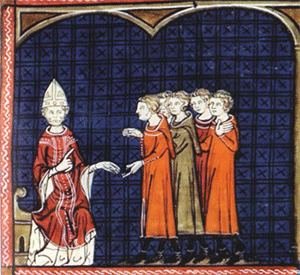
Barber: Simon of Montfort was lord of Montfort l’Amaury, whose lands were situated in the diocese of Chartres, about 40 miles west of Paris. He was a noble of local importance but not one of the great lords of France. His fame comes from his role in driving forward the crusade in Languedoc between 1209 and his death while besieging Toulouse in 1218 in a series of brutal campaigns that caused widespread destruction and death. However, he was convinced that he was undertaking God’s work in that he believed those who supported heresy deserved to lose their lands, status, and often their lives. During this time he showed huge strength of character in persisting with his mission despite many setbacks but is ultimately remembered in Languedoc for his major role in the miseries inflicted on the region in the course of the crusades.

Question: And what of Jacques Fournier (later to become Pope Benedict XII (1285-1342) and his inquisition courts? Why is he of any historical moment when it came to the Cathars?
Barber: Fournier is famous today largely because of the highly successful book, Montaillou (1978) by Emmanuel le Roy Ladurie. This is a sociological study of peasant society on the Sault plateau in the early fourteenth century. It is based on the extraordinarily detailed depositions extracted by his inquisitions, which provide an exceptional source of material on the everyday life of villagers of the area. Hitherto it had not been possible to discover much about the customs and habits of people at this social level. Fournier’s investigations were mainly concerned with those involved in the revival of Catharism led by the Autier brothers and, in the end, resulted in the final extirpation of the last remnants of Catharism in any organized form.
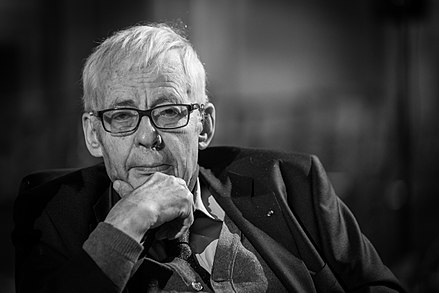
“[T]he Inquisition of Fournier and his colleagues, based in Carcassonne (Languedoc) and chiefly in Pamiers (Ariège), finally succeeded in flushing out this last pocket of [Cathar] resistance, by means of a detailed inquiry followed by some burnings at the stake, many sentences of imprisonment and still more penalities in the form of yellow crosses. (Just as medieval Jews wore the yellow star, so condemned herertics were forced to wear on their backs big crosses made of yellow material sewn to their outer garments.) Catharism never recovered from this final blow in 1320.”
(Ladurie ix, xi)
Question: Would you give us a general sense of, for example, the Inquisition Court at Pamiers (1318-1325) and how it operated and how it dispensed punishments?
Barber: Fournier operated in a way that did not differ significantly from his predecessors. However, one interesting aspect that perhaps received more emphasis was the use of spies and agents to track down some of the few remaining Cathar perfecti, the most notable case being that of William Belibaste who was lured back from northern Spain and executed in 1321.
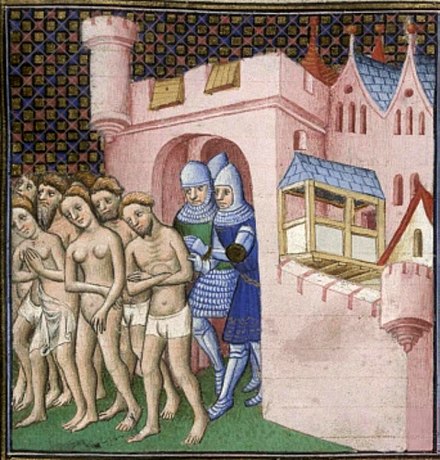
Question: Of the papal inquisitors we are told: “Anywhere in which a heretic had been found was to be destroyed . . . . [Heretics] were to wear two crosses, ‘in detestation of their recent error’ . . . . The crosses had to be a different colour from the garments and written permission was needed from the bishop before a former heretic could stop wearing them.” (p. 171) Can you say a few words about these inquisitors and their attempts to weed out heretics?
Barber: Inquisitors were senior members of the church hierarchy with theological and legal training. In the past heresy was one of the many responsibilities of local bishops who might be too busy or too lax to pursue heresy very vigorously, whereas inquisitors were (or became) a group of specialists, who built up experience and knowledge and were thus able to mount a systematic assault on heresy even when it was embedded in local communities.

Question: Who was Déodat Roché (1877-1978) and why is he an important figure in the history of “Cathars after Catharism”? (p. 239)
Barber: For those studying the influences upon the thought of Simone Weil, Roché is a key figure, since her reading of two of his articles encouraged her to turn a general interest in Manichaeism into a much more specific focus on the Cathar belief. Roché was a lawyer who had been a magistrate in Limoux and Carcassonne. He had been deeply interested in the religious influences on Christianity and his studies convinced him that Catharism had been deliberately suppressed by the Roman Church. He placed Catharism in the context of what he saw as a long tradition passed down from Gnosticism and Manichaeism ultimately to the Freemasons. To publicize his views he founded a society for the study of Catharism and established a journal, Cahiers d’Etudes Cathares, as well writing many books and articles. For him, this was an intellectual and moral endeavor that, given her outlook and temperament, understandably appealed to Simone Weil. At the same time, his work helped to popularize neo-Catharism in Languedoc and in that sense made a significant contribution to the modern tourist industry in the region.
Question: What remains of the Cathar culture?
Barber: As ever, what we see is the use of the past in the cause of present-day concerns, rather than the survival of anything which might be recognizable to thirteenth-century heretics. The main uses are in emphasizing contemporary Languedocian identity and, strongly connected to this, the promotion of tourism, the commercial value of which, ironically, is more important than any serious examination of the problems of materialism.
Question: As Simone Weil saw it, the Cathars and Catholics formed one culture. Even though they believed in different things, they supported each other to an extent. For Weil, she thought that lay Catholics were willing to defend the Cathars when they were persecuted. This is an important illustration for her of what a culture could be like, and it informs a lot of her thinking in The Need for Roots. Given that, what was the relationship between the Occitanian Cathars, say, at Monsegur, and the Occitanian Catholics? Were they mutually supportive?
Barber: The distinction between Catholics and Cathars in Languedoc is not perhaps as clear-cut as might be thought. Secular lords and even members of the local Catholic hierarchy seem to have seen the diversity of belief as part of their natural environment. When attacked by outside forces they rallied to defend ‘their world’ and ‘their lands’ rather than aligning themselves under an imaginary banner of Catharism. The northern resettlement and re-education programs can be viewed in this context, as will be all too familiar to historians of twentieth-century Europe. It is therefore understandable that some historians have recently questioned the very existence of a distinct Catharism in the region.
Question: In Chapter 7 of your book you turn some of your attention to Simone Weil and her understanding of Catharism. Though you do not hold yourself out as a Weil scholar, you do write: “Weil’s claim that the Cathars, although little was known about them, were ‘in some ways the heirs of Platonic thought,’ shows both in its cavalier disregard for evidence and its vagueness that her approach was fundamentally unhistorical . . . .” (p. 243) Would you care to elaborate on that?
Barber: The idea of Catharism as part of a single line of transmission is, apparently, what she would have liked to have been the case, given the moral and philosophical emphasis of her thought. In the Platonic view, a deity that was perfect could only fulfill that perfection by creating everything possible, which made that deity responsible for the existence of evil, so you can see where she was coming from. However, it is unhistorical in the sense that she was shaping diverse historical and intellectual movements and ideas into a pattern that suited her worldview rather than undertaking a serious examination of the evidence.
Collins: Thank you, Professor Barber, for agreeing to share your views of the Cathars with our readers. We greatly appreciate your informative replies.
Resources
- Malcolm Barber, The Cathars: Dualist Heretics in Languedoc in the High Middle Ages (2nd ed., Routledge, 2013)
- E. Jane Doering, Simone Weil and the Specter of Self-Perpetuating Force (University of Notre Dame Press, 2010)
- Henry LeRoy Finch, Simone Weil and the Intellect of Grace, edited by Martin Andic with foreword by Annie Finch (Continuum, 1999)
- Gabriella Fiori, Simone Weil: An Intellectual Biography Simone Weil: An Intellectual Biography (University of Georgia Press, 1989)
- Malcolm Lambert, The Cathars (Oxford: Blackwell, 1998)
- Emmanuel Le Roy Laurie, Montaillou : Cathars and Catholics in a French Village, 1294-1324, trans. by Barbara Bray (Gardners Book, 1990)
- Lissa McCullough, The Religious Philosophy of Simone Weil: An Introduction (I.B. Tauris, 2014)(credit: two of the citations referenced herein were cited in the notes of LM’s book)
- Daniel O’Hearn, “The Gnosticism of Simone Weil,” Epoche¯: Journal of the History of Religions at UCLA, 12 (1984), 1–6
- Simone Pétrement, Simone Weil: A Life (Pantheon Books, 1976)
- Déodat Roché, “Catholicisme ou Catharisme de Simone Weil,” Cahiers d’ éstudes Cathares 19 (1954), 169-182
- Andrew Phillip Smith, The Lost Teachings of the Cathars: Their Beliefs and Practices (Watkins Publishing, 2015)
- Simone Weil, Selected Essays: 1934-1943, trans. by Richard Rees with a foreword by Eric O. Springsted (Wipf and Stock, 2015)
- _______, Seventy Letters, trans. by Richard Rees with a foreword by Eric O. Springsted (Wipf and Stock, 2015)
- _______, Letter to a Priest, trans. by A. W. Wills with a foreword by Raimond Gaita (Routledge, 2014), pp. 22-26.


